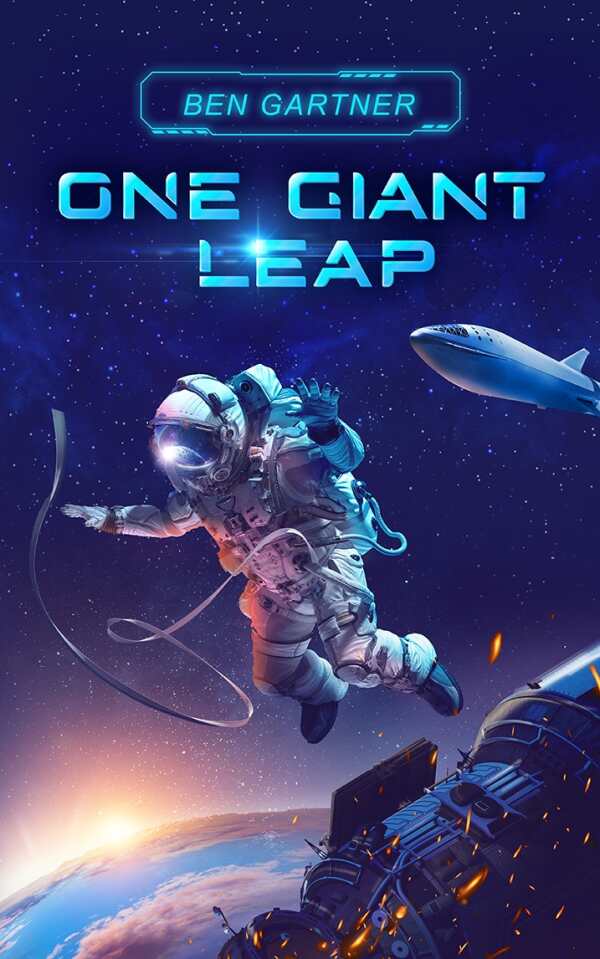One Giant Leap
A boy is launched into space in One Giant Leap, an exciting novel for young readers.
Ben Gartner captures the wonder and fear of space travel in his thrilling novel One Giant Leap.
Twelve-year-old Fin receives a package in the mail informing him of his acceptance into the StellarKid Project, a NASA program for sending the first children into space. Accompanied by his Uncle Dennis, Fin joins three other talented children in Houston to begin training for the mission. Though the the NASA staff and children work hard to prepare, not everyone is eager to proceed with the mission: one adult vocalizes his clear disdain for the plan, believing that sending children into space is dangerous and a waste of valuable resources.
Later, a child is hurt during an antigravity training session. It is one among several problems to occur during training. Though it seems there are people determined to sabotage the mission, Fin still makes it to space—where he becomes disconnected from his ship and faces death. He can see the destroyed International Space Station from where he floats.
Fin is an effective narrator who describes events in real time; he also addresses the audience directly, conveying his hopes, fears, and worries with clarity. Others in the story are less developed than Fin, though he still shares some insights into their behaviors and personalities. In conversation, both the adults and adolescents in the cast convey their personalities well: the NASA professionals who lead the mission are knowledgeable, and the children who are selected to be a part of the mission prove skilled. The children’s guardians, who have differing degrees of understanding of space travel, are also differentiated from one another. As a result, there is plenty of excitement and tension leading up to the children’s move into space.
Working to make its science fiction elements plausible, the story incorporates historical and scientific facts throughout. Its information is accessible and enhances the plot in a meaningful way. It balances its scientific terms with relatable language that illuminates the children’s issues with humor: they have difficulties with their parents, they struggle to get along with their peers, and they hunger to prove themselves to others. However, the book is less clear about its own period setting: a near future time frame is implied, but the precise date isn’t stated, leading to lingering question marks.
One Giant Leap is an exciting science fiction title for young readers; it honors the history and future of space travel during its hero’s fantastic adventure.
Reviewed by
Gail Hoffer-Loibl
Disclosure: This article is not an endorsement, but a review. The publisher of this book provided free copies of the book and paid a small fee to have their book reviewed by a professional reviewer. Foreword Reviews and Clarion Reviews make no guarantee that the publisher will receive a positive review. Foreword Magazine, Inc. is disclosing this in accordance with the Federal Trade Commission’s 16 CFR, Part 255.

